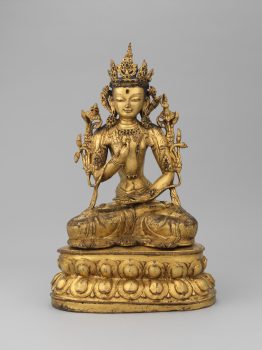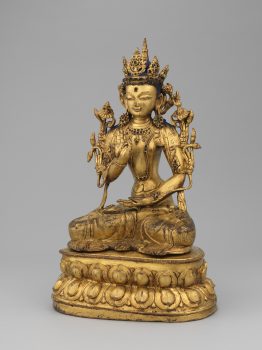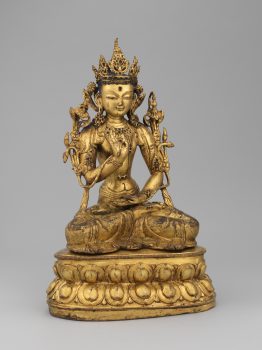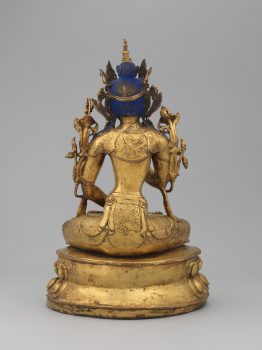Tibet
16th - 17th century
Also known as vajra position, this posture is associated with meditation.
Tibet
16th - 17th century




Maitreya is one of the great bodhisattvas and is said to reside in the realm of Tushita, awaiting his time to be born as a human and become the Buddha of the Future. As such, He is a popular figure in all of the Tibetan Buddhist traditions and is venerated by monks as well as the laity. Maitreya is often depicted as a youth with a stupa as his attribute. Here he is crowned and bejeweled and holds a lotus that supports an ewer, another of his attributes.
A contemplative practice in which a person uses concentration and visualization to achieve aims such as transforming the mind and generating feelings of compassion. Techniques include focusing on breathing or visualizing oneself as a deity.
In Buddhism merit is accumulated through engaging in positive actions that lead to positive results, such as better rebirths. Buddhists gain merit by making offerings, donating to those in need, reciting mantras, and other good deeds.
A meditation technique primarily used in tantric practice that involves imagining a deity in one’s mind or imagining oneself becoming a deity and carrying out various activities. Such techniques are intended to help a practitioner transform ordinary perception and achieve enlightened qualities.
Beings who aspire to become fully awakened like the Buddha and are dedicated to helping others on the path to enlightenment.
Today, Tibetans primarily inhabit the Tibetan Plateau, situated between the Himalayan mountain range and the Indian subcontinent to the west, Chinese cultural regions to the east, and Mongolian cultural regions to the northeast. During the 7th to 9th century, Tibetan rulers expanded their empire across Central Asia, and established Buddhism as the state religion.
Get the latest news and stories from the Rubin, plus occasional information on how to support our work.